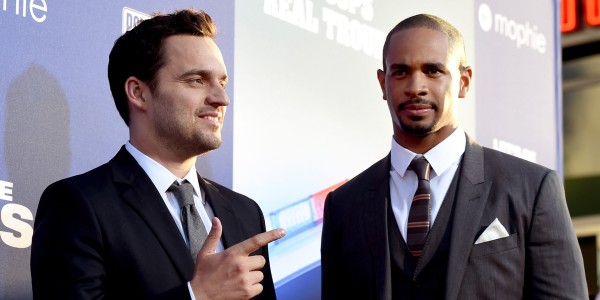“Wait, Wait ... Don’t Tell Me!” took the long road to Carnegie Hall.
NPR’s weekly satirical news quiz show has been on the air for 11 years and has toured the country since 2005. Along with cities such as Los Angeles and Boston, it’s been to Wichita, Kan.; Sioux Falls, S.D.; and Beloit, Wis.
“You know the old saying, if you can make it here, you can make it anywhere?” says “Wait, Wait” host Peter Sagal, strolling down Broadway in a tuxedo, ready for the show. “Well, we basically made it everywhere else first.”
In its 11 years on the air, “Wait, Wait” has grown into one of the most popular radio programs on the dial. Based in Chicago, where it regularly tapes from the Chase Auditorium, it draws nearly 3 million listeners a week. That doesn’t count the 1 million who listen by podcast, one of the most downloaded on iTunes.
The New York episode, taped Thursday and to air Saturday and Sunday, is a pinnacle for “Wait, Wait.” Despite its old-fashionedness, “Wait, Wait” has become a weekly destination (“appointment radio,” this week’s guest, NBC anchorman Brian Williams, has called it) for wit.
Along with the venerable radio newsman Carl Kasell as scorekeeper, Sagal leads a revolving panel of humorists and writers. They include Paula Poundstone, Mo Rocca, P.J. O’Rourke, Roy Blount Jr., Adam Felber, Roxanne Roberts and Charlie Pierce.
In games like “Listener Limerick Challenge” and “Who’s Carl This Time?” the group fires improvised jokes and puns at the week’s strangest news while callers pray their answers succeed in winning the show’s prize: Kasell’s voice on their answering machine.
Created by Doug Berman, “Wait, Wait” has thrived for several reasons, most notably because of the newfound reach of the podcast and the key decision in 2005 to pull the broadcast out of the studio and into theaters with live audiences. Since that move, the show’s audience has nearly doubled.
Slideshow 26 photos
Celebrity Sightings
But “Wait, Wait” also coincided with the rise of media and political satire, marked by “The Daily Show” and “The Colbert Report.”
“Our slogan is: NPR without the dignity,” says Sagal.
Sagal suggests that mockery is the appropriate reaction to some news, like former Alaska governor Sarah Palin’s claim that her house’s proximity to Russia suggested international experience. Some news organizations went to the Alaskan coast to fact-check. The “Wait, Wait” response: “That’s like saying, ‘I can see Lake Michigan, so I’m a sturgeon.”’
Margaret Low Smith, the vice president of programming at NPR, says “Wait, Wait” — which sold out Carnegie Hall in 90 minutes — is a “bona fide hit.”
“It is a pleasure that we have a little whimsy along with our wonk,” said Smith, alluding to NPR’s more serious programming. “Both ‘Car Talk’ and ‘Wait, Wait’ are what we call ‘gateway shows,’ instead of gateway drugs. I know, because I have a 16-year-old kid. When I turn on ‘Wait, Wait,’ he’ll listen. It’s a little harder when I put on some of the other shows.”
Another popular Chicago-based public radio program, Ira Glass’s “This American Life,” was adapted into a TV show for Showtime in 2007. “Wait, Wait” nearly followed suit, producing a pilot for CBS. It wasn’t picked up, but the show is considering other possibilities on television.
However “Wait, Wait” grows in the future, it’s clearly succeeded in breathing life into an old form.
“We are an argument for old-timey radio,” says Sagal. “We can’t compete with (Jon) Stewart and (Stephen) Colbert in terms of the writing talent that they bring to bear and the production skills they have. But what we can do is create something that sounds — and to a great extent really is — genuine and actual and happening in the moment.”
